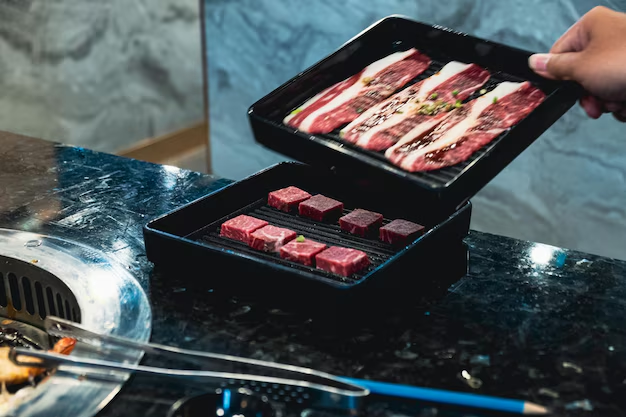How Long Are Your Ribs Safe to Eat When Refrigerated?
Ribs are undeniably a favorite among meat enthusiasts, whether they're smoked, barbecued, or roasted. Their tenderness and flavor make them a popular choice for family gatherings and festive occasions. However, when it comes to storing leftovers, a common question arises: how long are ribs good for in the refrigerator? Understanding food safety, proper storage methods, and the lifespan of refrigerated ribs is crucial to prevent foodborne illnesses and ensure that your delicious leftovers remain safe to eat.
🌡️ Understanding Food Storage Basics
Before delving into the specifics of rib storage, let's lay the groundwork with some basic principles of food preservation:
- Temperature Matters: Keeping food at the right temperature is key. The "danger zone" for food, which is between 40°F and 140°F, is where harmful bacteria can multiply rapidly.
- Refrigeration Rule: To keep food out of the danger zone, your refrigerator should be set at or below 40°F. Consider using a thermometer to ensure accurate temperature checks.
- Time Limits: While refrigeration slows bacterial growth, most perishable foods shouldn't stay in the fridge for more than a few days.
🥩 How Long Can Ribs Last in the Refrigerator?
When stored properly, cooked ribs can typically last about 3 to 4 days in the refrigerator. This timeframe assumes that the ribs have been wrapped or stored in airtight containers to maintain freshness and moisture. Here are a few factors to consider:
- Initial Cooking: Properly cooked ribs will have fewer bacteria, giving them a slightly longer shelf life in the fridge.
- Storage Methods: The way you store your ribs can significantly impact their longevity. Airtight containers or wrapping in foil or plastic wrap can help prevent oxidation and mold growth.
- Cured vs. Uncured: Cured ribs might last a little longer due to preservatives used in the curing process, but it's still best to consume them within the typical 3 to 4-day window.
🕒 Factors Influencing Ribs Shelf Life
1. Handling and Preparation
The handling and preparation process can influence how long your ribs stay fresh in the refrigerator:
- Clean Handling: Always use clean hands and utensils when handling ribs to avoid cross-contamination.
- Immediate Storage: After cooking, allow ribs to cool briefly, then refrigerate them promptly to minimize time in the danger zone.
- Portion Control: Slice and store ribs in portions that reflect how you plan to consume them. This way, you'll open and expose smaller amounts to air each time, preserving the rest.
2. Storage Techniques
To maximize the shelf life of your ribs:
- Airtight Packaging: Use airtight containers or heavy-duty aluminum foil to wrap your ribs. This helps maintain moisture and prevents air exposure.
- Labeling: Always label your stored ribs with dates so you can track their freshness.
- Placement: Store ribs at the back of the fridge where the temperature is colder and steadier.
3. Quality of Meat
The quality of the meat also plays a role in how long ribs will last:
- Freshness: Fresh, high-quality ribs will naturally last longer than those approaching their sell-by date.
- Fat Content: Ribs with higher fat content may spoil faster as fats can become rancid over time.
🧠 Signs That Your Ribs Have Gone Bad
Even with impeccable storage, ribs can still go bad, and it's crucial to recognize the signs:
- Smell: An off or sour smell is a clear indicator that ribs should be discarded.
- Texture: Slimy or sticky surface textures suggest bacterial growth and spoilage.
- Appearance: Discoloration or mold formation is a definitive indication that ribs are no longer safe to eat.
🔥 Safe Consumption Guidelines
To safely enjoy refrigerated ribs, consider the following pointers:
- Reheating: Before consumption, ribs should be reheated to an internal temperature of at least 165°F to kill any possible bacteria.
- Flavor Enhancement: Smoking or grilling can add fresh flavor and aroma to previously refrigerated ribs.
- Creative Leftovers: Transform leftover ribs into sandwiches, tacos, or salads to keep meals exciting.
♻️ Alternative Storage Solutions: Freezing Ribs
If you're not planning to consume your ribs within a few days, freezing is an excellent option. Properly frozen ribs can last for up to 2 to 3 months without significant loss of quality. Here’s how to do it:
- Cool Completely: Allow ribs to cool to room temperature to prevent freezer burn.
- Portion for Convenience: Slice ribs and pack into meal-sized portions.
- Use Freezer-Friendly Packaging: Wrap tightly in plastic wrap or store in zipper-lock freezer bags. Remove as much air as possible.
- Label and Date: Clearly mark packages with the date of storage.
📌 Key Takeaways for Storing Ribs
Here’s a concise list of best practices for storing ribs in the refrigerator, ensuring they stay fresh and safe:
- 🕒 3 to 4 Days: Eat refrigerated ribs within 3 to 4 days for optimal freshness.
- 🌡️ Proper Temperature: Keep your refrigerator at or below 40°F.
- 🥡 Airtight Storage: Use airtight containers or wrap in foil/plastic wrap.
- 🏷️ Labeling: Always label with storage dates.
- 🔥 Reheat: Warm to 165°F before eating.
- ❄️ Freezing Option: For longer storage, freeze ribs for up to 3 months.
By following these guidelines, you'll keep your ribs fresh, flavorful, and safe for consumption. Whether you're saving leftovers from a party or meal prepping for the week, understanding these fundamentals of food storage helps preserve the deliciousness of ribs while ensuring your meals remain safely enjoyable. Enjoy your ribs with confidence, knowing they're stored correctly and ready to delight your taste buds once more!
